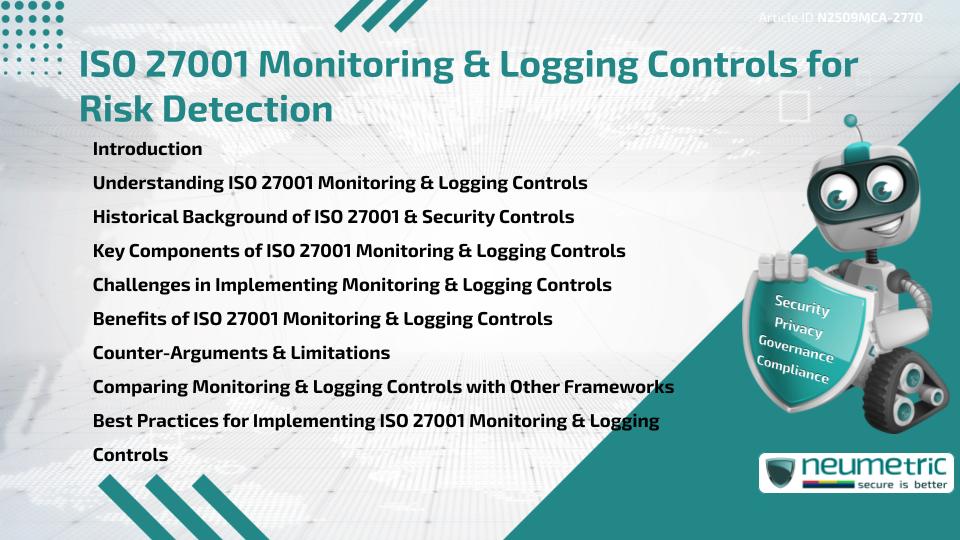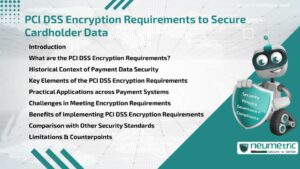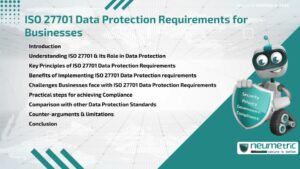Table of Contents
ToggleIntroduction
The ISO 27001 Monitoring & Logging Controls provide Organisations with structured measures to detect, analyze & respond to Information Security Risks. These Controls are central to an Information Security management system [ISMS], enabling businesses to identify unusual activity, prevent breaches & ensure accountability. By adopting ISO 27001 Monitoring & Logging Controls, Organisations can strengthen their ability to detect Risks early & safeguard Sensitive Information.
Understanding ISO 27001 Monitoring & Logging Controls
Iso 27001 Monitoring & Logging Controls refer to Policies & technical measures that record, track & review system activities. They ensure that all actions-whether by users, applications or systems-are traceable & auditable. For Organisations, these Controls provide visibility into operations, helping to spot unauthorized activities, misconfigurations or emerging Threats.
Historical Background of ISO 27001 & Security Controls
ISO 27001 was first introduced in 2005, evolving from earlier Information Security standards. It established a comprehensive Framework for managing Information Security Risks. Monitoring & Logging Controls were emphasized because Organisations increasingly relied on digital systems, making it vital to track activities for Risk detection. Updates to the Standard in 2013 & 2022 reinforced the importance of these Controls, reflecting the growing complexity of Cyber Threats.
Key Components of ISO 27001 Monitoring & Logging Controls
The ISO 27001 Monitoring & Logging Controls include several essential elements:
- System monitoring: Tracking system performance & detecting anomalies.
- User activity logging: Recording logins, file access & changes to critical data.
- Audit trails: Maintaining Evidence of who did what & when.
- Event correlation: Using tools to analyze logs across multiple systems for patterns.
- Retention Policies: Storing logs securely for defined periods to support investigations.
- Access restrictions: Ensuring only authorized personnel can view or modify logs.
- Alerting mechanisms: Automatically notifying staff of suspicious activity.
Challenges in Implementing Monitoring & Logging Controls
Organisations may encounter difficulties when implementing ISO 27001 Monitoring & Logging Controls:
- High volumes of log data, leading to “alert fatigue.”
- Resource constraints in maintaining monitoring systems.
- Integration challenges with legacy infrastructure.
- Ensuring Data Privacy when storing & reviewing logs.
- Lack of skilled staff to interpret & act on monitoring results.
Benefits of ISO 27001 Monitoring & Logging Controls
Despite challenges, iso 27001 Monitoring & Logging Controls provide significant benefits:
- Improve early detection of Risks & breaches.
- Provide Transparency & Accountability through Audit trails.
- Strengthen compliance with legal & regulatory requirements.
- Enhance Incident Response capabilities with timely alerts.
- Build Stakeholder trust by demonstrating proactive Risk Management.
Counter-Arguments & Limitations
Some critics argue that monitoring & logging can be expensive & may create Privacy concerns if not properly managed. Others suggest that even with monitoring, Organisations may still miss sophisticated attacks. While these arguments have merit, Monitoring & Logging Controls remain essential for any effective ISMS, particularly when combined with regular analysis & skilled oversight.
Comparing Monitoring & Logging Controls with Other Frameworks
Other Frameworks, such as NIST Cybersecurity Framework & SOC 2, also emphasize monitoring & logging. However, iso 27001 Monitoring & Logging Controls stand out because they are embedded in a certifiable ISMS. This makes them enforceable & auditable during external certification, providing Organisations with global recognition for their security practices.
Best Practices for Implementing ISO 27001 Monitoring & Logging Controls
Organisations can maximize the effectiveness of ISO 27001 Monitoring & Logging Controls by:
- Automating log collection & analysis with Security Information & Event Management [SIEM] tools.
- Defining clear retention & access Policies.
- Training staff to interpret logs & respond to alerts.
- Conducting periodic reviews of monitoring effectiveness.
- Integrating monitoring with Incident Response & Risk Management processes.
Conclusion
The ISO 27001 Monitoring & Logging Controls provide Organisations with essential mechanisms for detecting & managing Risks. By implementing these Controls effectively, businesses can strengthen compliance, enhance accountability & build resilience against Cyber Threats.
Takeaways
- Iso 27001 Monitoring & Logging Controls track system & User activities to detect Risks.
- Key components include Audit trails, alerts, retention & event correlation.
- Challenges include cost, alert fatigue & Privacy concerns.
- Benefits include early Risk detection, compliance & Stakeholder trust.
FAQ
What are ISO 27001 Monitoring & Logging Controls?
They are measures that track & record system activities to detect & manage security Risks.
Why are these Controls important?
They provide early warning of Risks, support compliance & ensure accountability.
What are examples of Monitoring & Logging Controls?
Examples include system monitoring, user activity logging, Audit trails & alerts.
What challenges exist in applying these Controls?
Challenges include large volumes of data, integration issues & lack of skilled staff.
How do these Controls compare with other Frameworks?
Unlike some Frameworks, ISO 27001 makes monitoring & logging auditable & certifiable.
Can small Organisations implement these Controls?
Yes, they can scale Monitoring Tools & Policies to match their resources & Risk profile.
References
- ISO – Information Security Standards
- NIST – Cybersecurity Framework
- Council of Europe – Data Protection and Privacy
Need help for Security, Privacy, Governance & VAPT?
Neumetric provides organisations the necessary help to achieve their Cybersecurity, Compliance, Governance, Privacy, Certifications & Pentesting needs.
Organisations & Businesses, specifically those which provide SaaS & AI Solutions in the Fintech, BFSI & other regulated sectors, usually need a Cybersecurity Partner for meeting & maintaining the ongoing Security & Privacy needs & requirements of their Enterprise Clients & Privacy conscious Customers.
SOC 2, ISO 27001, ISO 42001, NIST, HIPAA, HECVAT, EU GDPR are some of the Frameworks that are served by Fusion – a SaaS, multimodular, multitenant, centralised, automated, Cybersecurity & Compliance Management system.
Neumetric also provides Expert Services for technical security which covers VAPT for Web Applications, APIs, iOS & Android Mobile Apps, Security Testing for AWS & other Cloud Environments & Cloud Infrastructure & other similar scopes.
Reach out to us by Email or filling out the Contact Form…





